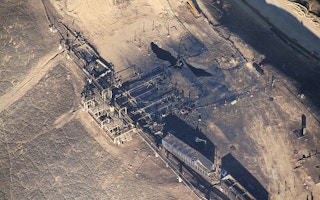Fewer than one-third of oil and gas companies report their emissions of powerful greenhouse gas methane through voluntary, publicly available sources, posing a risk to their investors, said a new report released on Monday.
Green group Environmental Defense Fund said that of the 65 largest US oil and gas producers and midstream companies it reviewed, only 18 reported their methane emissions. Even fewer provided details about how they planned to curtail leaks.
Methane is the second-largest source of greenhouse gas emissions but is 84 times more powerful than carbon dioxide, the largest source, in the first 20 years after its release.
Because methane is the main component of natural gas, leaks from oil and gas infrastructure represent the loss of a saleable product.
CalSTRS Chief Executive Officer Jack Ehnes said the California pension fund has a financial stake in the long-term performance of the natural gas industry and its response to climate change.
“Methane disclosure is one important piece of the climate change risk management puzzle,” he said.
Some companies disclose their methane emissions voluntarily in Securities and Exchange Commission 10-K filings, sustainability reports, and corporate surveys. The Environmental Protection Agency is working to improve its methane data.
“The lack of rigorous and standardized metrics hampers disclosure quality,” the EDF report said.
Research firm Rhodium Group recently estimated that the sector lost 3.5 trillion cubic feet of unburned natural gas, worth about $30 billion, through methane leaks and venting in 2012.
In August, the Obama administration proposed methane emission standards for new and modified oil and gas facilities as part of a broader effort to cut them from the sector by up to 45 per cent below 2012 levels in the next 10 years.
The standards do not extend to existing infrastructure, which will account for 90 percent of oil and gas industry emissions by 2018.
A major ongoing methane leak believed to be from a broken underground pipe in Southern California in October has brought national attention to the issue.
Without regular checks on infrastructure, incidents like this are inevitable, said Mark Brownstein, vice president of EDF’s climate and energy program.
“It’s a dramatic example of a phenomenon that is common,” he said, “and it’s the reason why it becomes so critically important for the feds and the states to require systematic leak detection and repair programs.”








